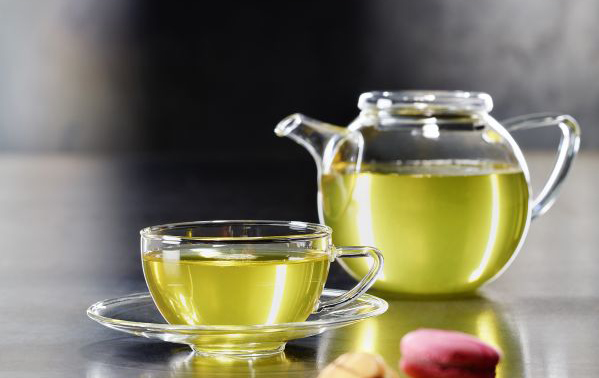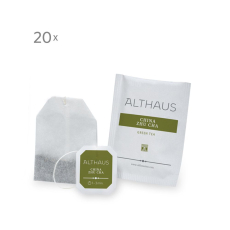Green Tea
Green Tea
Green Tea
Green Tea
Flavoured Green Tea
Green Tea
Green Tea
Green Tea
Green Tea
Green Tea
China Zhu Cha
Green Teabags
The Unique Qualities of Chinese Green Tea
The Chinese emperor Shen Nong is thought to have discovered Chinese green tea in around 2700 B.C. Since then, it has evolved to become one of the most popular drinks in China - and the rest of the world. Each region’s harvest its own subtly different characteristics.
Chinese loose-leaf green tea is pan roasted. This gives it a distinctively mild, rich, quality that sets it apart from the grassier Japanese varieties.
The uniquely-flavoured Gu Zhang Mao Jian, and the top-quality Silver Needle Organic are exquisite varieties of Chinese green tea as well as the delicious flavoured Chinese green tea, Jasmine Xian Yu.
Harvesting and Production

There are many types of green tea and the process varies depending on whichever tea you choose. One thing to consider is that green teas are known as unfermented teas. The fermentation process that takes place in most tea production is not present with green tea. The most customary practice includes:
- Withering: Once the tea leaves have been harvested, they are laid out, traditionally on bamboo trays, and exposed to heat – whether this be natural sunlight or a temperature-controlled room. This dries the leaves reducing any leftover moisture.
- Heating: To prevent oxidation the withered leaves are then heated; this preserves the freshness of the tea leaves.
- Rolling: Once the heating process is complete the tea leaves are rolled into different shapes. As mentioned, traditionally Chinese green tea is pan roasted and then rolled by hand.
- Drying: The final process, after being rolled into various shapes the tea leaves are dried.
History of Chinese Green Tea
The history of green tea is long and captivating, with the first mention of the brew dating back thousands of years. It is said to begin with the Chinese Emperor of the time who accidentally drank water that had been boiled with a tea leaf within.
Despite being around for so long, Chinese green tea only became widely available to all in China in the 14th century.
It was not until the 16th century that Chinese Green Tea was introduced to the west. This occurred when European traders visited East Asia, they were mesmerised by the delicious and unique taste of the green tea!
Over the years the popularity of Chinese green tea has soared worldwide!
How to Brew Chinese Green Tea
Whether you want to use the loose leaves or try a tea bag infusion, the standard process is the same.

Brewing Chinese Green Tea:
- Boil some freshly poured cold water
- Place the tea leaves in a tea strainer
- Pour the hot water over the leaves
- Steep the tea for the appropriate amount of time
- Strain the tea
- Sit back and enjoy!
Brewing Table
 Ranging from 1 rounded teaspoon to 1 heaped teaspoon
Ranging from 1 rounded teaspoon to 1 heaped teaspoon
 2-4 minutes
2-4 minutes
 A range of colours including: Yellow/Green,Bright Yellow, Light Yellow, Pale Yellow, Pale Green, Amber & Chartreuse.
A range of colours including: Yellow/Green,Bright Yellow, Light Yellow, Pale Yellow, Pale Green, Amber & Chartreuse.
NOTE: Please make sure to read the individual brewing instructions on each pack of tea.
Light and refreshing, Chinese green tea is pale in colour and sweet in flavour - a delicious and balanced tea!
Our Chinese Green Tea favourites are below:

Ding Gu Da Fang Organic Gunpowder Organic Green Keemun Congou
- Ronnefeldt Ding Gu Da Fang Organic - A suprbly refreshing tea with a delicious soft and flowery aroma
- Ronnefeldt Gunpowder Organic - A smooth green tea with an interesting process -Gunpowder produces a soft honey or coppery brew, with an herby or grassy, smooth light taste.
- Ronnefeldt Green Keemun Congou - A rediscovered exclusive rare tea from the south province of Anhui with a beautifully balanced, rounded, aromatic flavour.





 EARN POINTS WITH OUR LOYALTY SCHEME
EARN POINTS WITH OUR LOYALTY SCHEME

























